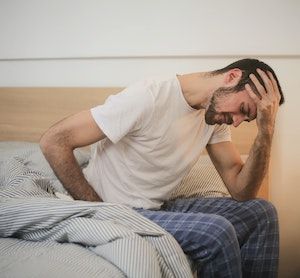Standardized Good Sleep Rating System Validated in Australia Study
Due to the lack of a standard set of ‘good sleep’ criteria, a questionnaire was developed to help gauge criteria for sleep health.

The use of a questionnaire in sleep research called the Good Sleeper Scale-15 (GSS-15) was validated as a means to identify ‘good sleepers’ by a recent population-based survey.
The sample characteristics for a good sleeper in clinical studies have varied widely, as there has never been a standardized set of eligibility criteria. Even someone defined as a ‘normal’ sleeper may have poor sleep habits, as is likely the case with adolescents and young adults.
Certain approaches such as the Sleep Health Index (SHI) measure sleep disorder symptoms, duration, and quality, but it does not measure useful components such as sleep regularity or timing. Consequently, researchers led by Jack Manners and Sarah L. Appleton, PhD, used the RuSATED sleep assessment as a foundation to develop a questionnaire.
“In the present study, a questionnaire was developed for the specific purpose of simplifying and standardizing the recruitment of good sleepers for sleep research studies,” Manners and colleagues wrote. “This questionnaire is known as the GSS-15.”
Research and Methods
The investigators’ analysis applied data collected from the online 2019 Sleep Foundation survey assessing Australian adults’ sleep health. They recruited 2044 participants ≥18 years old through a market research company.
Through the RuSATED framework, the investigators used exploratory factor analysis (EFA) to determine which items of the framework to use in their selection, as well as a confirmatory analysis (CFA) for structure validation. The CFA was used on 1853 of the original sample, and the EFA on the remaining 191.
On the finalized questionnaire, the investigators determined that a higher score pointed to better sleep or sleep function, with 7-8 hours indicating good sleep, for example, and either <6 or >9 hours being worse. Some other coded research included:
- Weekday and weekend sleep midpoints (2:30 a.m. indicated better sleep).
- Difference between weekend and weekday midpoints (<30 min indicated better sleep).
- Perceived sleep issues identified by surveyed participants on a 0-10 scale, with 10 being no perceived issues.
Other elements of their assessment included prevalence of issues such as sleep disorders such as diagnosed chronic insomnia and sleep apnea. Spearman correlation was used to assess the association between GSS-15 score and sleep and health outcomes.
Study Results
The investigators’ analysis of receiver operating characteristic (ROC) curves of questionnaire scores against a set of varying sleep-related characteristics demonstrated good predictive power. Their analysis for exploratory factors yielded 6 factors in total: timing, sleep difficulty, adequacy, duration, perceived sleep problem, and regularity.
The research team noted some of the strengths of the questionnaire based on the data:
- The use of CFA and EFA to analyze the effectiveness of GSS-15.
- Factor-model definitions which are essential to understanding dimensionality.
- The large sample size is such that the study was not limited to a subgroup or specific clinical population.
“ROC curves supported that the GSS-15 was effective at identifying good sleeper characteristics, such as getting a good night's sleep, never reporting feeling unrefreshed after sleep, and the absence of daytime sleepiness and dysfunction,” they wrote.
The investigators do not intend GSS-15 to be used as a complete screener for sleep health, writing that in cases where specified disorders or behaviors represent exclusion criteria, the questionnaire should be used to supplement relevant items and existing instruments that are typically implemented to define conditions.
The team concluded that the GSS-15 questionnaire in future sleep research should be used in conjunction with parallel multidimensional sleep outcomes to assess the constituents of healthy sleep patterns.
The study, “The Good Sleeper Scale-15 items: a questionnaire for the standardized assessment of good sleepers,” was published online in the Journal of Sleep Research.